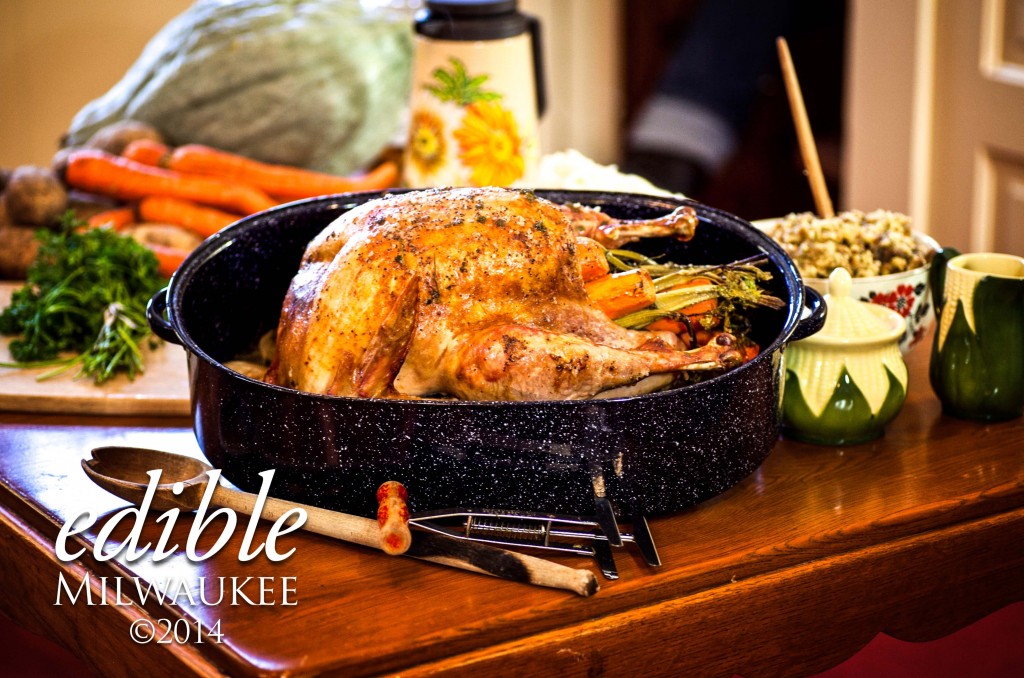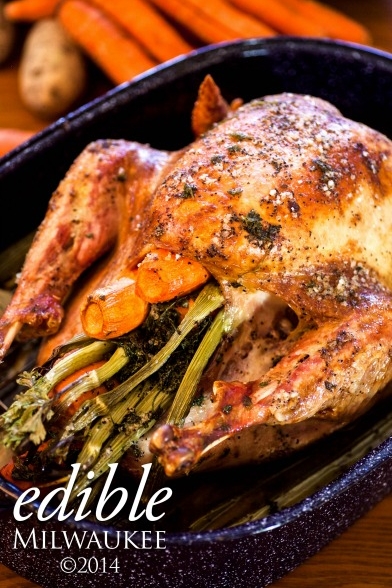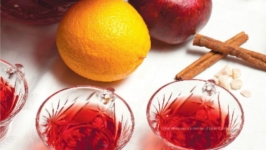Roast Dinner, Not Yourself
Easy meaty mainstays for your holiday feast
Winter for us hearty souls living in northern climes is a time of reflection. We register the change of the seasons with rituals and mark the whirl of days with celebrations. The harvest is in and as we prepare for the long snowy days ahead, our thoughts turn to gratitude. Grateful that, though many go without, we will share our bounty and celebrate with friends and family. Holidays of all types bring our loved (and loathed) ones together for a meal. This season, we cooks should gift ourselves the easiest of celebratory meals to prepare: the roast dinner.
Roast meats are the traditional centerpiece of many feasts, both religious and secular. Roasting, by definition, is one of the earliest and simplest of cooking techniques—you use a dry, indirect heat to cook a larger cut of meat. Successful roasting is another story. Many a cook’s heartbreak is caused by an overcooked bird, a burnt joint, or charred rump. I promise, there are easy solutions.
Paul Zerkel, Chef at Goodkind (a Bay View restaurant specializing in rotisserie meats) and I spoke about what makes for successful roasting. As we sat outside on the patio, I asked if there was any single thing to remember about cooking a holiday roasted dinner. Zerkel replied, “Relax. Give yourself a break. The whole idea of roasting is a ‘set it and forget it’ method.”
But before you even turn your oven on, you need to select your meat. Turkey is traditional at Thanksgiving and Christmas. But beef, goose, lamb, and even more exotic meats, can all be delicious choices. Zerkel recommends choosing a high-quality meat. “It will have more natural flavor and fewer additives.” Many area farmers specialize in raising a specific type and breed of livestock. Contact a farm directly or visit a local farmer’s market to discover what’s available.
The next step is preparation. Because roasting is using a dry heat, you need to keep moisture from escaping. Zerkel is a fan of brining, the act of adding moisture to meat by immersing it in salt for an extended period of time. The salt in the brining solution breaks through to the muscle cell walls causing the cells to retain more moisture. The more moisture in the meat before you begin roasting, the more tender and juicy the final product will be.
Zerkel says that fowl (turkey, goose, chicken) respond really well to a dry brine of salt and herbs in the refrigerator for 12-15 hours. Pork and red meats do best with a wet brine.
The next step is the actual cooking. You’ll want to get a roasting pan, even an oblong cake pan can work here. You’re looking for a pan that will hold the meat, a rack, and the juices. The meat shouldn’t touch the bottom because you’ll get a more even and thorough cooking with it lifted. If you don’t have a roasting rack, improvise. I often lay down a bed of whole carrots, celery, and onions then put the meat on top. The vegetables do the heavy lifting and add flavor.
Adding a liquid to the bottom of the pan will generate more moisture. For fowl, I use a cheaper (but still drinkable!) white wine and for red meats, a red wine. The alcohol evaporates, and is a simple way to add flavor. It also deglazes the pan to keep all that goodness in the juice and not stuck to the bottom. Apple juice, cider, pear juice, water, and beer, all can be used as a cooking liquid. (I use the leftover roasted vegetables and juices as the beginning of the next day’s soup stock.)
Zerkel says, “Slow and low.” For fowl, a lower temperature for a longer time will give you the best results. Red meats do very well with an initial high temperature blast for 30 minutes, then turn the temperature down for a the rest of the cooking process. The high temp is actually triggering a chemical response in the meat, the Maillard response. It means that the amino acids in the protein and sugars are changing, which gives red meats more flavor.
Fats also play a role in roasting—that’s why we baste meats. Zerkel recommends using a schmaltz, or rendered fat, as a baste. Butter and olive oil can also work here. For the “superstar” turkey you see in the photos, I spread a simple combination of melted butter, salt, pepper, and squeezed garlic on the bird about once an hour.
Zerkel stressed the importance of letting your roasted meat “rest”. He explained, “Meat will be tough if you serve it immediately after coming out of the oven. When you let it rest, the juices return to the meat. Any roast should rest about 20-30 minutes.” To rest your roast without losing heat, build a simple tent from aluminum foil. The roast doesn’t have to be tucked in, just lightly covered to keep the heat in the meat.
We chatted about the pressure home cooks are facing at the holidays. New cookbooks. Television cooking shows. Trends. “Most of us look at holidays as more about tradition. If your friends and family are adventurous and fun, sure, then try out new recipes. Otherwise, stick to what you know and are comfortable cooking.”
I asked Zerkel if he was planning on cooking for Thanksgiving. He gave me a sidelong look, “No way. That’s my night off! In fact, my family insists I don’t cook on holidays.”
My family tells a story every holiday season. It stars my maternal grandfather, Ned, and his very large Siamese cat, Charlie. Legend has it that as Ned lifted the Thanksgiving turkey out of the roaster and gently placed it onto the platter, he turned his back. He swore it was only a moment. Could have been longer; the house was full of people drinking boilermakers. Charlie the Cat did not see the magnificent bird as the centerpiece of Thanksgiving dinner sitting on the table, he saw an opportunity.
He quickly managed to work the leg loose. The rest of the family was alerted to the disaster with a cry of, “You dirty sonofa….” and the chase was on. Charlie took off with the turkey leg: Ned in pursuit. The standoff occurred in the living room: Charlie, with the roasted treasure locked in his jaws and Ned grabbing the boney end, pulling hard. There were many more oaths sworn that day. I’m not really sure who won, but I like to think we all did, because as we celebrate holidays this winter season, it’s the stories we create with our friends and families that are the centerpiece of our feasts.
Paul Zerkel’s Ranking of Meats and Ease of Roasting
EASY:
Chicken
(Use a dry brine and roast a few of them for a classic meal to feed a larger group. They hold temperature well until ready to serve.)
Less EASY:
Pork • Beef • Elk • Bison • Lamb
(These are temperature sensitive and require more attention to coordinating cooking time with your other foods.)
COMPLICATED:
Turkey • Goose
These larger fowl complete cooking at different times and require more attention.
Suggested Brines
Fowl: Combination of salt and herbs
Pork: Sugar, water, and herbs
Beef/Elk/Bison: Olive oil, garlic, and herbs








